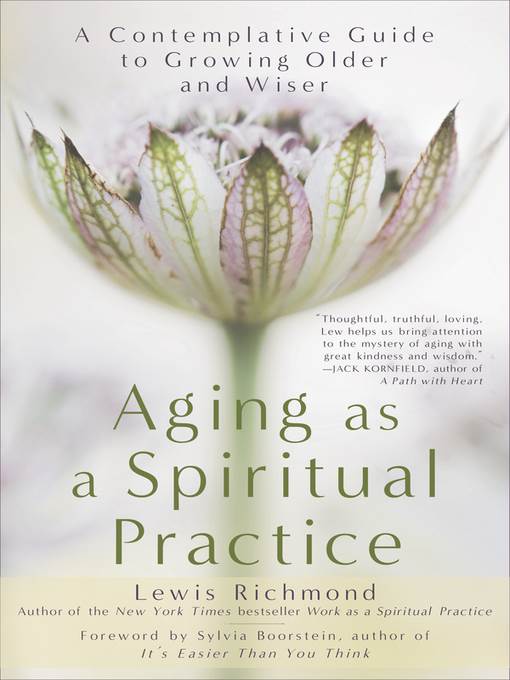
Aging as a Spiritual Practice
A Contemplative Guide to Growing Older and Wiser
کتاب های مرتبط
- اطلاعات
- نقد و بررسی
- دیدگاه کاربران
نقد و بررسی

November 14, 2011
This “user’s guide to aging well” draws on Buddhist principles to address the challenges of growing older. “Aging is not just change, but irreversible change—for better or for worse,” writes Richmond, a Zen Buddhist priest, meditation teacher, author (Work as a Spiritual Practice), and columnist (Huffington Post). “The real question... is: What do we do about it?” He weaves current scientific findings with the stories of older adults, including his own, to illuminate aspects of aging. Useful information includes the stages of aging; what kinds of worry are helpful and what are not; the function of elderhood; and the essence of Buddhism. The book’s range is wide, and Richmond’s insights exceptionally acute. Especially strong are his recognition that individuals experience time’s losses and gains very differently, and his analysis of the need to seek out new identities. Richmond draws from multiple Buddhist traditions, especially the wisdom of Zen master Shunryu Suzuki. Each chapter ends with a contemplative practice; the book concludes with instructions for a one-day “personal retreat.” This compassionate, hopeful book is a valuable resource for the inquiring adult coping with the passages of aging.

November 15, 2011
A Zen Buddhist priest and meditation teacher offers "a user's guide to aging well" by celebrating "the joys and rewards of aging" while accepting the inevitable losses that accompany it. Richmond (A Whole Life's Work: Living Passionately, Growing Spiritually, 2005, etc.) believes that diet and exercise are only part of the story. He provides a refreshing road map for facing old age optimistically but without the illusion of a fountain of youth. In his mid-60s and having suffered two life-threatening illnesses, Richmond draws on a depth of personal experience about the reality of overcoming fear while recognizing that certain changes are irreversible and certain options are closed to us as we age, even if we are not ill or infirm. The author describes four stages in the "journey of aging," and he emphasizes that true contentment comes from looking inward. "The spiritual life is all about connection…to oneself as well as others," and spending time with "your closest and dearest friend--yourself." While Richmond applies traditional Zen techniques, he does so from an ecumenical standpoint. Each chapter is filled with anecdotes from contemporary life about how people he knew have dealt with the challenges of getting older. Referring to Erik Erikson's "groundbreaking 1950s book Childhood and Society," Richmond suggests that we often fail to appreciate the wisdom that comes with age and what the elderly have to contribute as mentors. A spiritual affirmation that provides a welcome alternative to the prevailing belief that maintaining the appearance of youth as long as possible is an antidote to aging.
(COPYRIGHT (2011) KIRKUS REVIEWS/NIELSEN BUSINESS MEDIA, INC. ALL RIGHTS RESERVED.)

November 15, 2011
Although this is a user's guide to aging well written from the perspective of a Buddhist priest and meditation teacher, you don't have to be a Buddhistor, for that matter, Christian, Jewish, Muslim, Hindu, or even a believerto appreciate its very helpful reflections. The crux of the book is the simple declarative sentence, Everything changes. The first truth of Buddhist teaching and the first truth of aging are the same. As Richmond poignantly observes, Everything we love and care about . . . will change, transform, and eventually pass away. Richmond believes this potent idea need not be depressing. On the contrary, it can be positive and transformative. Each chapter explores a specific facet of the aging process, from a discussion of the stages of aging to the science of healthy aging, and concludes with a series of contemplative reflections. Included are stories of ordinary people, some of whom like growing old and others who do not. In addition, Richmond offers examples of contemplative Buddhist practices. An effective primer.(Reprinted with permission of Booklist, copyright 2011, American Library Association.)

























دیدگاه کاربران